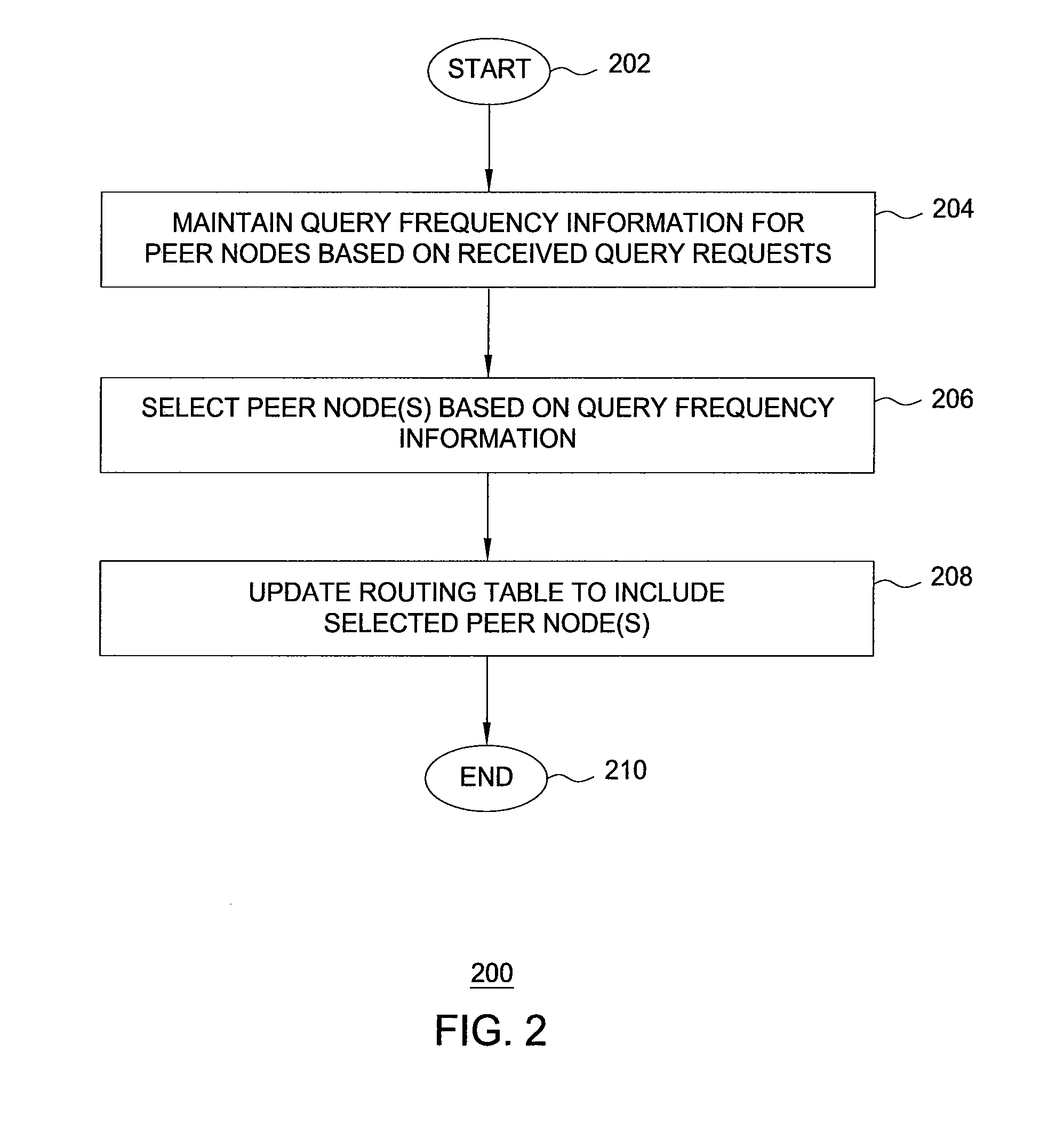Methods for peer-caching for faster lookups in peer-to-peer systems
- Summary
- Abstract
- Description
- Claims
- Application Information
AI Technical Summary
Benefits of technology
Problems solved by technology
Method used
Image
Examples
Embodiment Construction
[0011]The present invention provides a technique for minimizing average query latency by caching auxiliary neighbors at each of the nodes of a peer-to-peer network (in addition to the core neighbors typically cached at each of the nodes). The core neighbors cached at each peer node of the P2P network are determined based on the underlying P2P network. The auxiliary neighbors cached at each peer node of the P2P network are determined based on access frequency information associated with each of the other peer nodes of the P2P network. For each peer node of the P2P network, while the core neighbors stored at that node attempt to minimize the worst-case query latency for that node, the auxiliary neighbors stored at that node attempt to reduce the average query latency for that node.
[0012]FIG. 1 depicts a high-level block diagram of an exemplary peer-to-peer (P2P) network. Specifically, peer-to-peer network 100 includes a plurality of peer nodes 110A-110F (collectively, peer nodes 110)....
PUM
 Login to View More
Login to View More Abstract
Description
Claims
Application Information
 Login to View More
Login to View More - R&D
- Intellectual Property
- Life Sciences
- Materials
- Tech Scout
- Unparalleled Data Quality
- Higher Quality Content
- 60% Fewer Hallucinations
Browse by: Latest US Patents, China's latest patents, Technical Efficacy Thesaurus, Application Domain, Technology Topic, Popular Technical Reports.
© 2025 PatSnap. All rights reserved.Legal|Privacy policy|Modern Slavery Act Transparency Statement|Sitemap|About US| Contact US: help@patsnap.com



